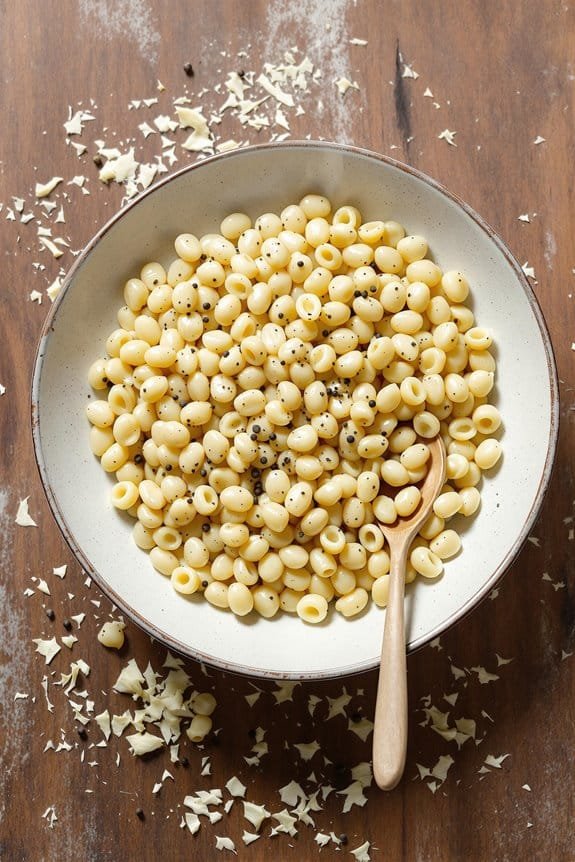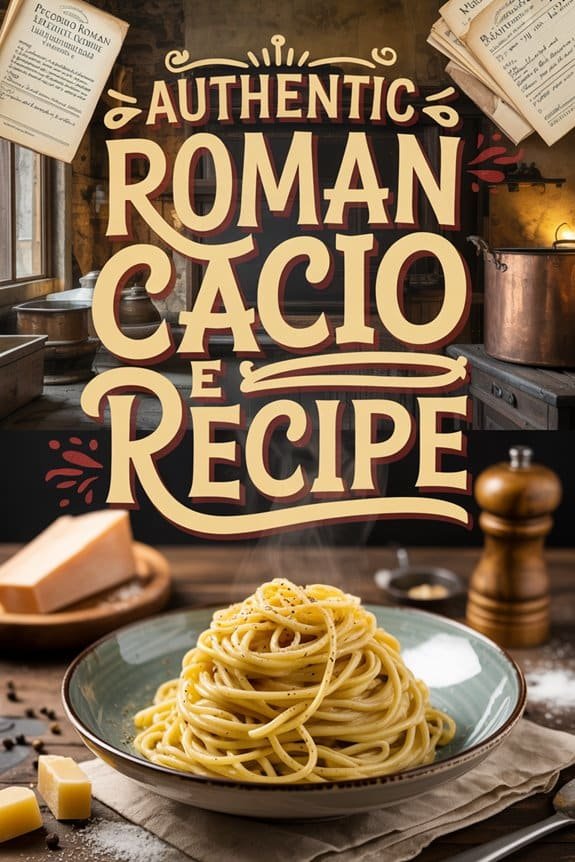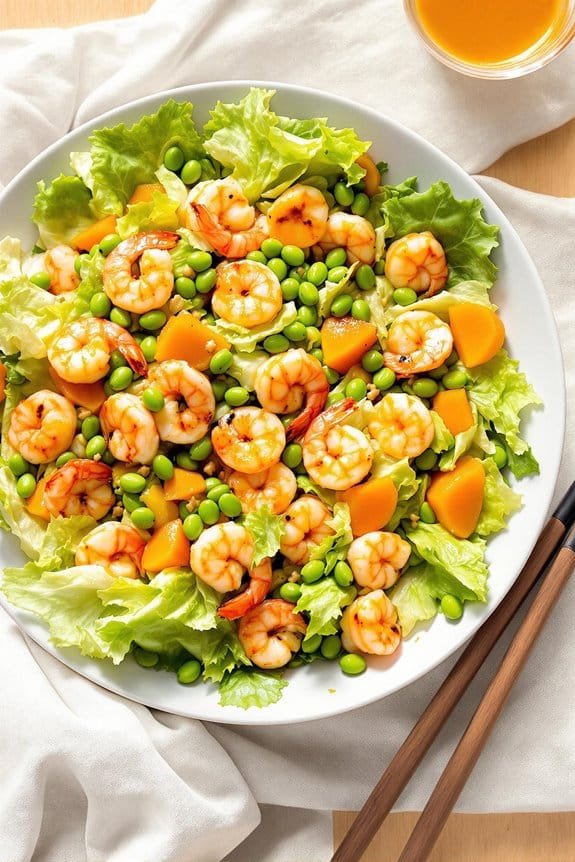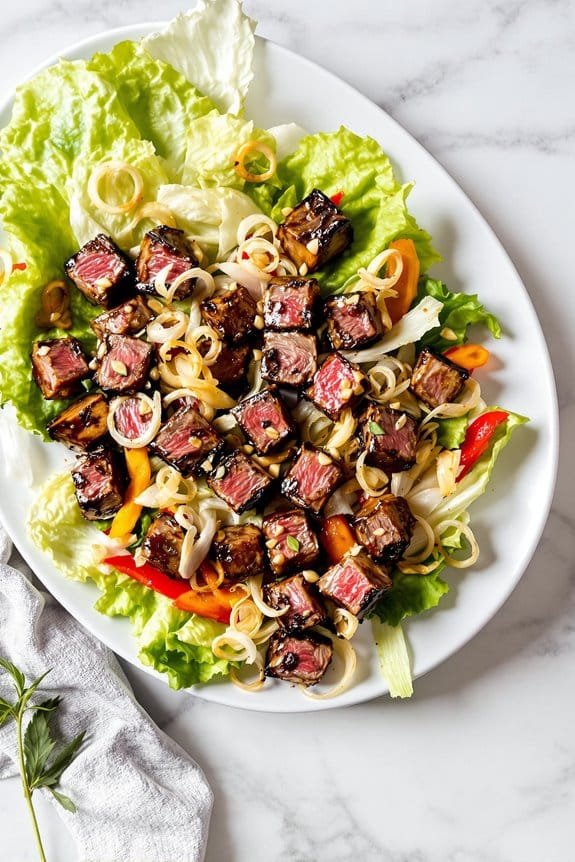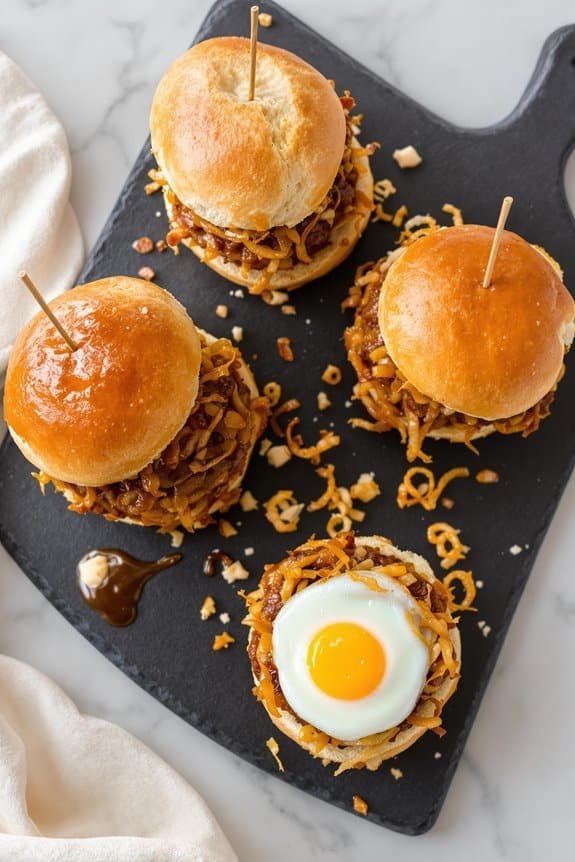The Simple Joy of this Authentic Roman Cacio E Pepe
The beauty of cacio e pepe lies in its deceptive simplicity—just three ingredients that somehow transform into pure Roman magic on your plate.
I’m talking about pasta, pecorino romano, and black pepper. That’s it. No cream, no butter, no fancy techniques that’ll send you spiraling into culinary despair.
Yet somehow, when you toss hot pasta with starchy cooking water and cheese, chemistry happens. The cheese melts into silk. The pepper bites just right.
It’s comfort food that doesn’t try too hard, which honestly makes it even more impressive when you nail it perfectly.
Ingredients
Getting your hands on the right ingredients for cacio e pepe is invigoratingly straightforward, though don’t let that fool you into thinking any old substitutes will do.
This dish lives and dies by the quality of its few components, so while your grocery list might be short, each item deserves a little attention.
- 1 lb acini de pepe-shaped pasta or your favorite small shell pasta
- 2 teaspoons coarse black pepper
- 1 cup pecorino romano cheese, grated
Now, about that pasta choice—acini de pepe gives you those tiny, satisfying pearls that grab onto every bit of cheese sauce, but honestly, any small pasta with good nooks and crannies will work beautifully.
The black pepper should be coarsely ground, not that dusty stuff that’s been sitting in your spice cabinet since the Clinton administration. Fresh-cracked pepper makes a world of difference here.
And pecorino romano, well, this is where you absolutely can’t compromise. It’s got that sharp, salty bite that parmesan just can’t match, plus it melts into that silky sauce we’re chasing.
If you can grate it yourself instead of buying pre-grated, your pasta will thank you for it.
How to Make this Authentic Roman Cacio E Pepe

The beauty of cacio e pepe lies in its deceptive simplicity—seriously, you can make restaurant-quality pasta with just a few moves. Start by bringing a large pot of water to a boil for your 1 lb of acini de pepe pasta, and once it’s bubbling away, toss in some salt and drop in the noodles.
Cook them to al dente according to the package directions, but here’s the essential part that separates the pros from the pasta disasters: right before you drain everything, rescue a ladle or two of that starchy cooking water. This liquid gold is what transforms your dish from sad, clumpy cheese pasta into silky perfection.
The magic really happens in the mixing bowl, where timing becomes your best friend. Pour that reserved pasta water into a medium bowl, drain your pasta, and immediately toss it with the 2 teaspoons of coarse black pepper.
Now comes the moment of truth—add that 1 cup of grated pecorino romano cheese in small handfuls, sprinkling it over the hot pasta and tossing with tongs like you’re conducting a very delicious orchestra. For perfectly thin, consistent cheese shavings that melt evenly into your pasta, consider using a professional meat slicer which can also handle hard cheeses like pecorino romano with precision. The key is working quickly while everything’s still steaming hot, letting the cheese melt gradually into a creamy sauce rather than turning into stringy clumps.
If it looks too thick, add more pasta water bit by bit until you get that glossy, coating consistency that makes grown adults weep with joy. Give it a final taste for salt, though honestly, the pecorino usually brings enough saltiness to the party.
Substitutions and Variations
While I’m absolutely team purist when it comes to cacio e pepe—because honestly, why mess with Roman perfection—I get that sometimes you need to work with what’s lurking in your pantry.
No pecorino? Parmesan works, though you’ll lose that sharp, salty bite.
Can’t find acini de pepe? Any short pasta that holds sauce well will do. Spaghetti’s actually traditional too.
Want to add protein? Toss in some crispy pancetta or leftover rotisserie chicken.
Need vegetables? Peas or asparagus won’t offend the pasta gods too much.
Just remember, each addition takes you further from Rome.
Additional Things to Serve With Authentic Roman Cacio E Pepe
Since cacio e pepe shines brightest as the star of your dinner table, you don’t need much to complete this Roman masterpiece.
I like keeping it simple with a crisp Caesar salad or some crusty Italian bread for sopping up every last bit of that silky sauce. A glass of dry white wine, maybe Frascati or Pinot Grigio, cuts through the richness beautifully.
Want something heartier? Add some sautéed greens like spinach or broccoli rabe on the side. The key isn’t overwhelming this elegant dish with too many competing flavors.
Final Thoughts
Mastering cacio e pepe isn’t just about following a recipe—it’s about understanding the beautiful simplicity that makes Roman cooking so brilliant.
I’m telling you, once you nail this technique, you’ll feel like you’ve revealed some ancient culinary secret. The magic happens in that moment when pasta water, cheese, and pepper transform into silk.
Sure, your first attempt might look more like scrambled eggs than creamy perfection, but that’s totally normal. Keep practicing. Trust the process.
Because when you finally get it right, you’ll understand why Romans have been obsessing over this dish for centuries.

